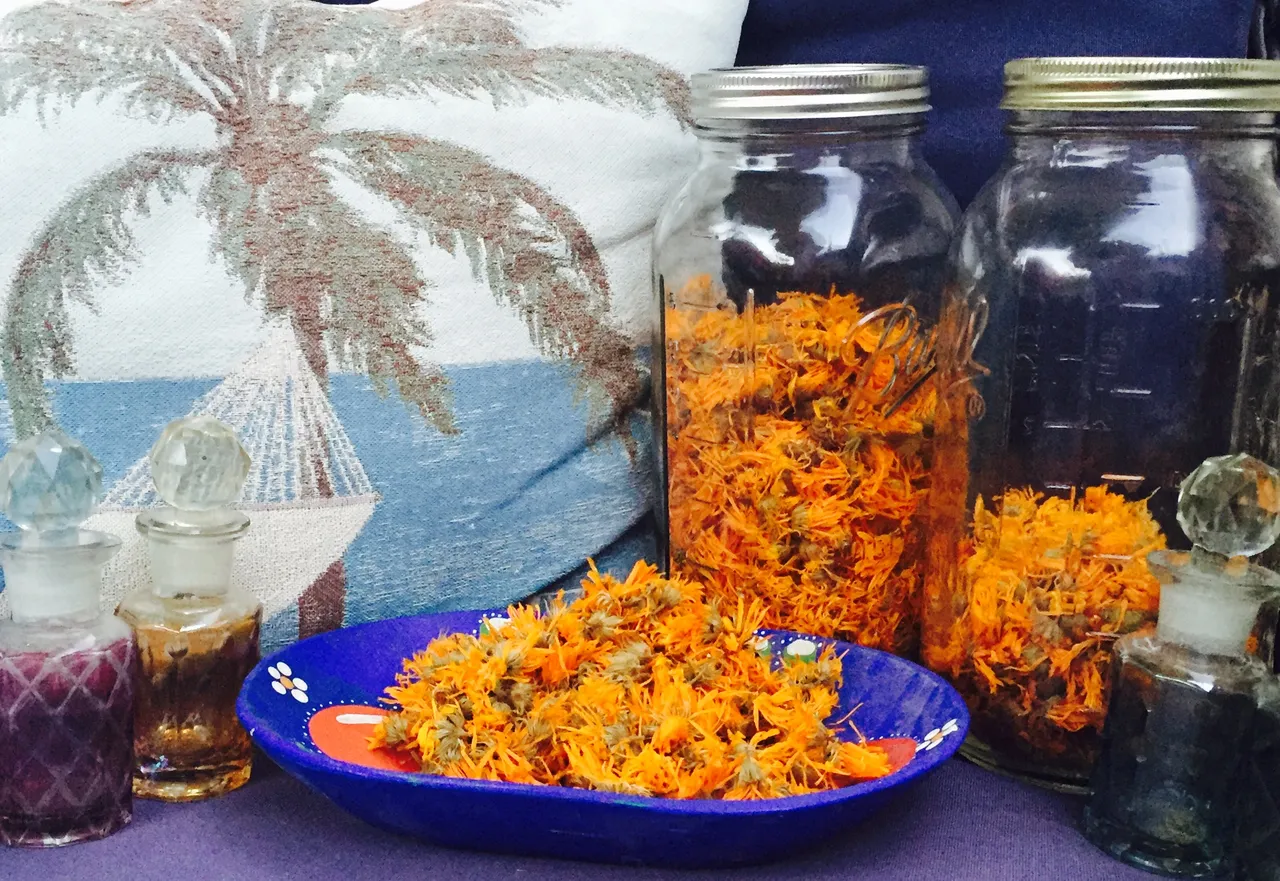Calendula Part II
I touched on Calendula in my last blog, but because it is one of my favorites, I decided to dive deeper into this lovely herb.The bright yellow and orange blossoms make me smile. I have so many plants blooming in my garden this Spring that self sowed from last year. I pick the blossoms about every other day and dry them to make oil infusions, tinctures and teas.
Calendula officinalis
Common name: Marigold
Parts used: Petals and flowering heads
Actions: Anti inflammatory, Anti spasmodic, Lymphatic, Astringent, Vulnerary, Emmenagogue, Antimicrobial
Indications:
Topical- One of the best herbs for treating skin problems. Calendula is a safe and effective treatment for any skin inflammation from infection or physical damage. It will help slow healing, wounds and skin ulcers as well as external bleeding, bruises or strains. Minor burns and scalds benefit from a first calendula treatment.
Internal- Internally, it is useful for digestive inflammation including gastric ulcers. It can calm indigestion and help relieve gall bladder problems. As an emmenagogue, it has been shown to aid in painful periods and delayed menstruation. It is used to normalize the menstrual cycle.
Calendula infused in oil is combined with Granny's Garden Salve. The oil shines like the Sun in a beautiful golden color. Used for cuts, abrasions and all skin healing needs. It can be used for diaper rash, burns and bruises.
Folklore:
Calendula has been long revered as a magical medicinal ally for centuries. The Egyptians used calendula to rejuvenate the skin. The Greeks and Romans used it as a culinary garnish. In India, Calendula is often strung into garlands for religious rituals. Calendula is said to hold powers of protection and prophecy. Calendula is said to move stagnation and bring healthy circulation. Calendula symbolizes warmth, bring better communication and success.
These blogs are not meant to diagnose or treat. Always seek medical attention and use common sense.
Sources:
David Hoffman, Therapeutic Herbalism
The practical Herbalist Newsletter

